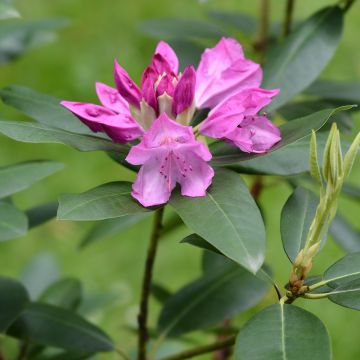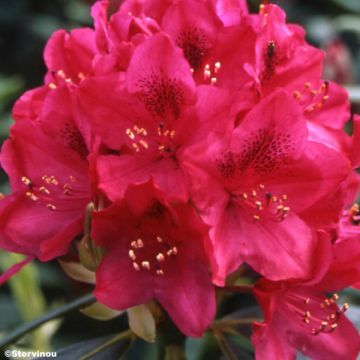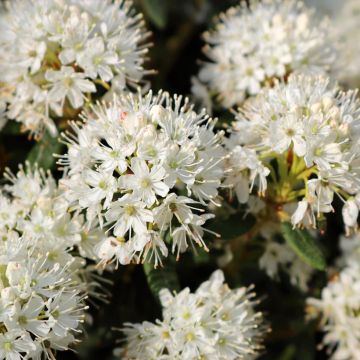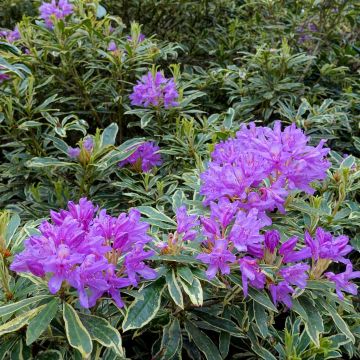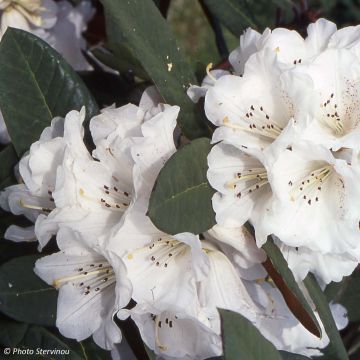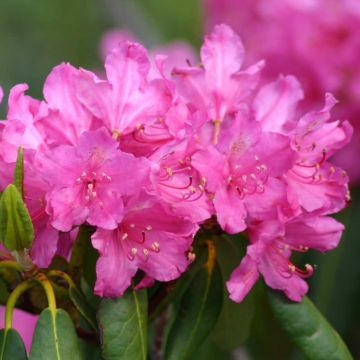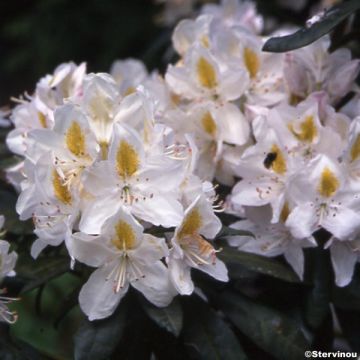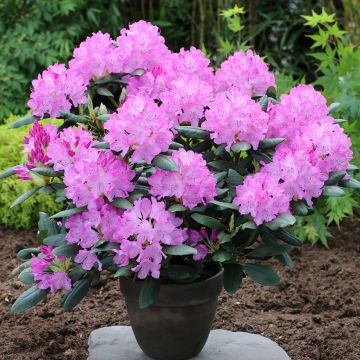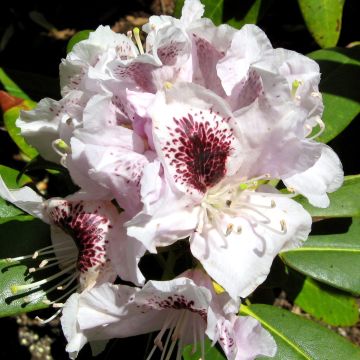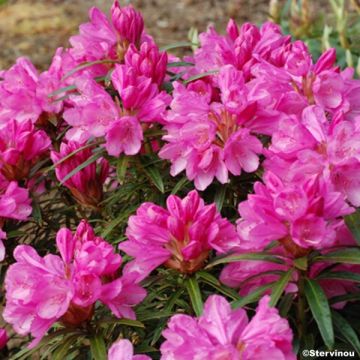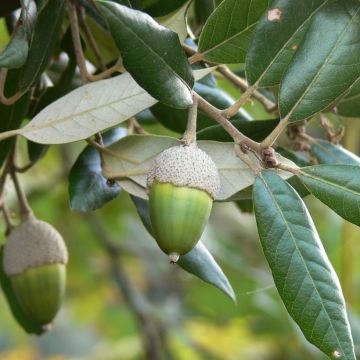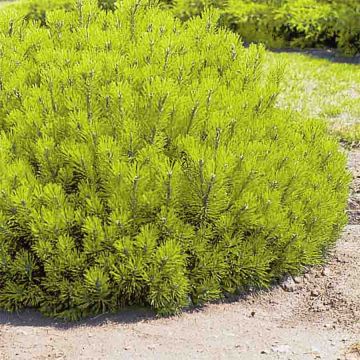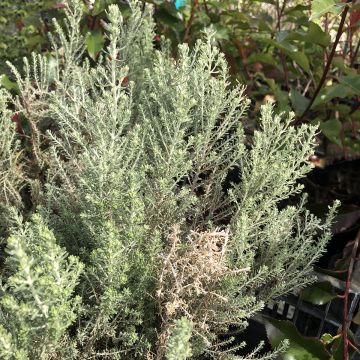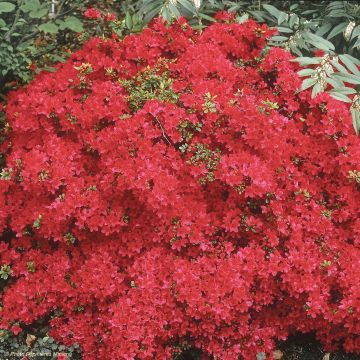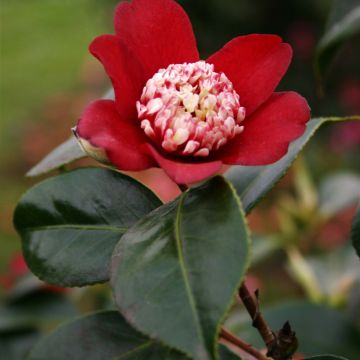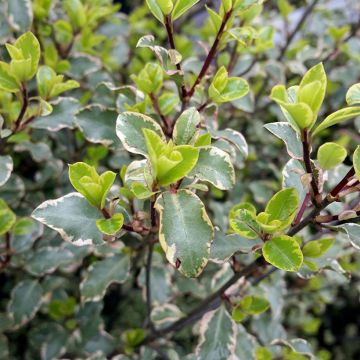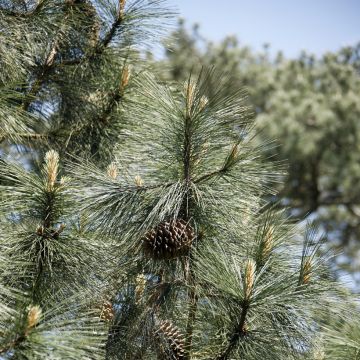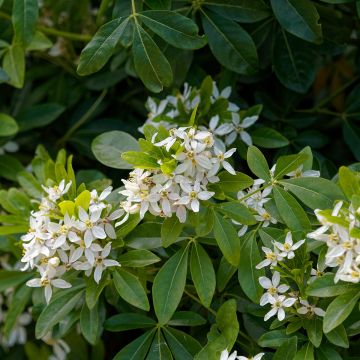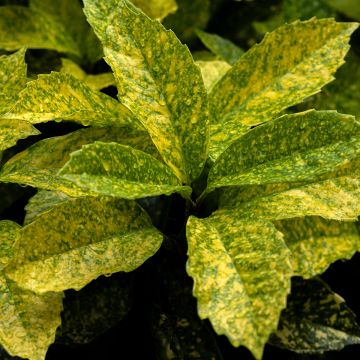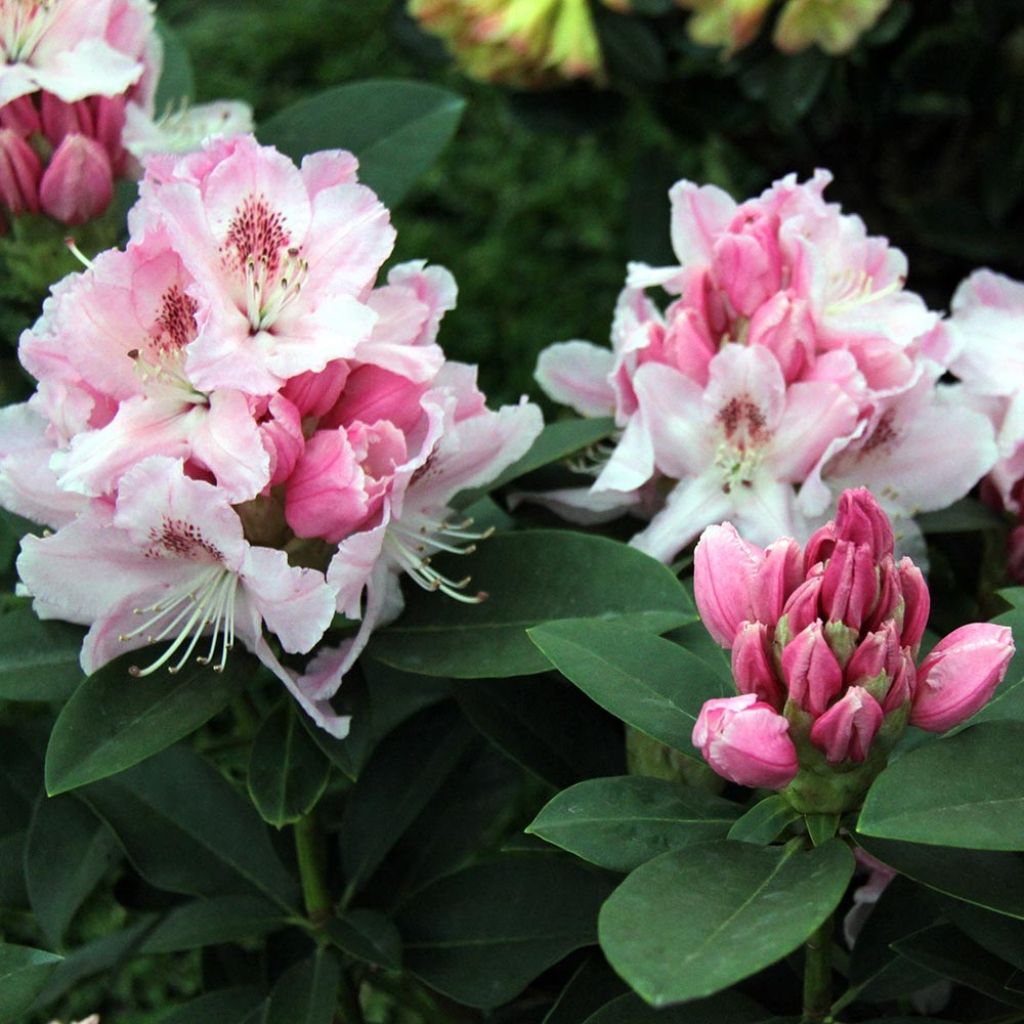

Rhododendron Albert Schweitzer
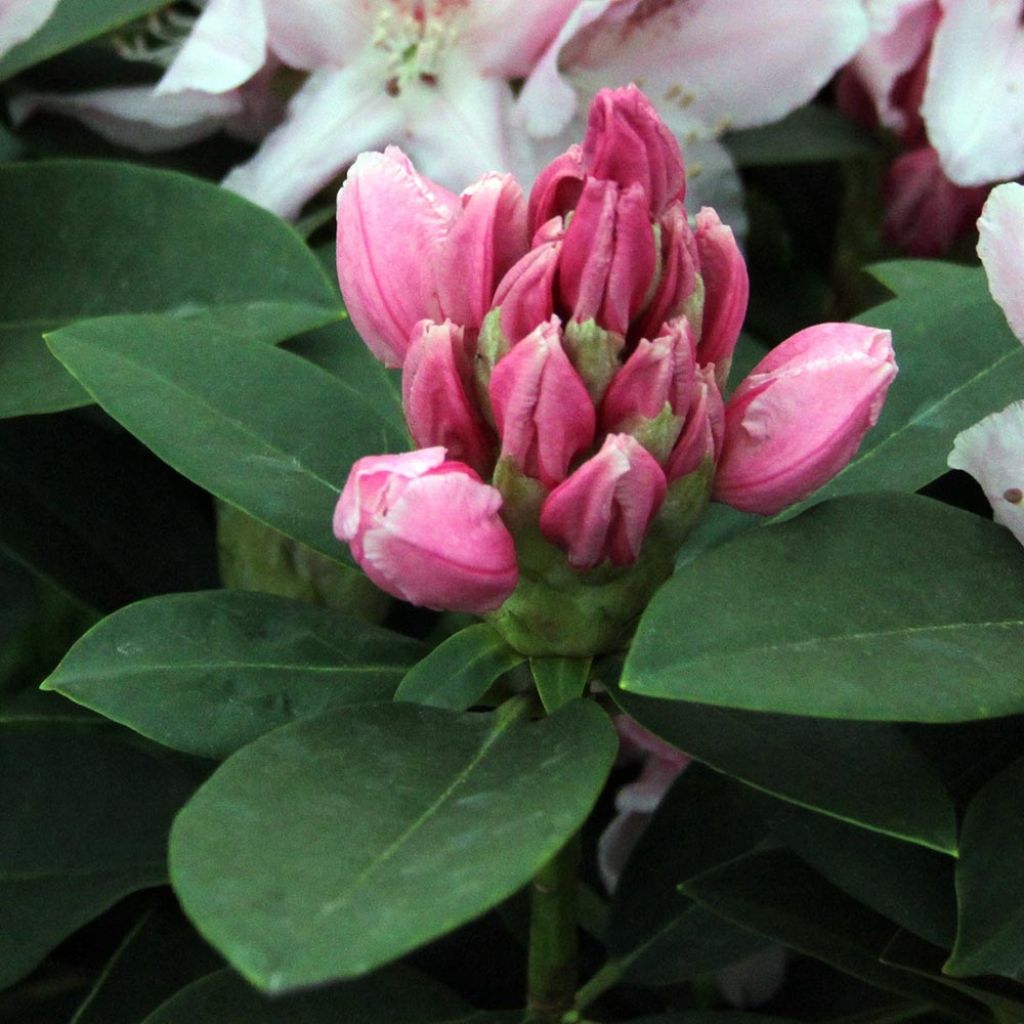

Rhododendron Albert Schweitzer
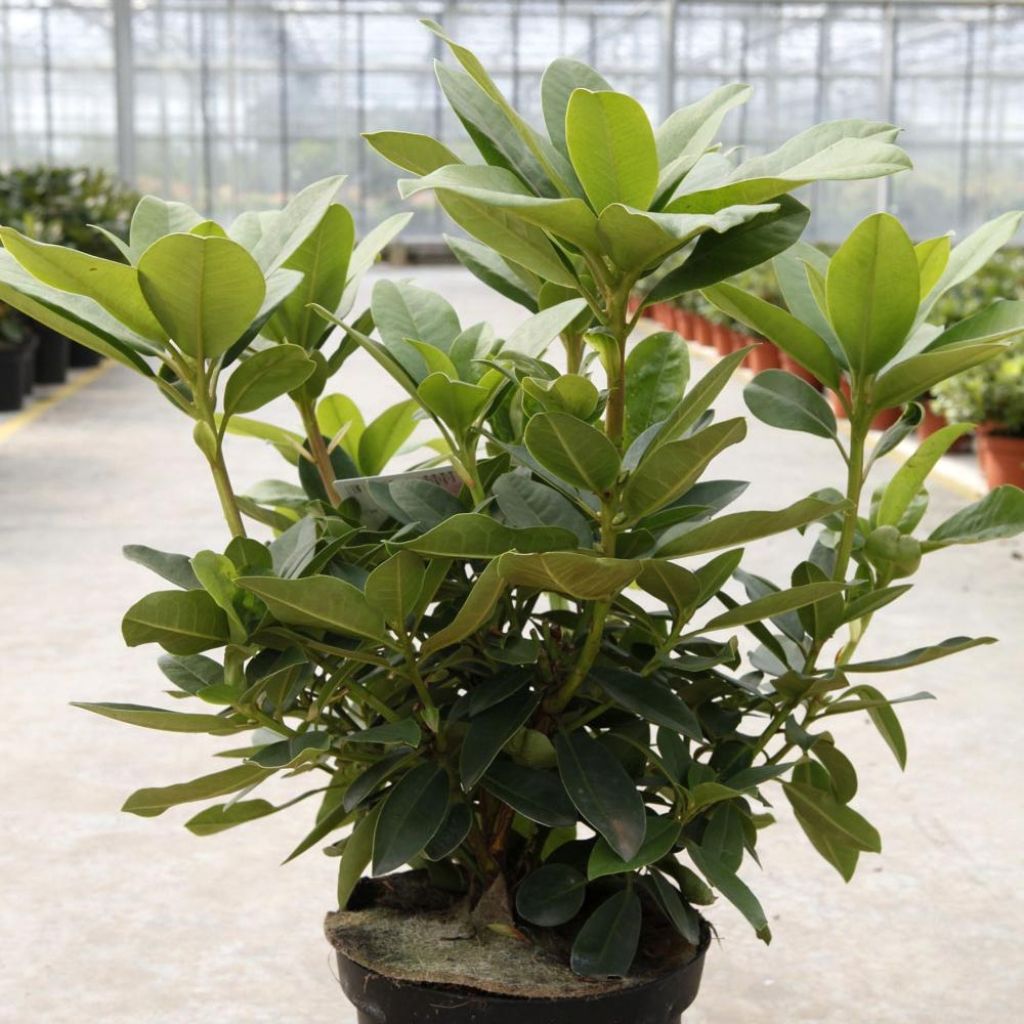

Rhododendron Albert Schweitzer
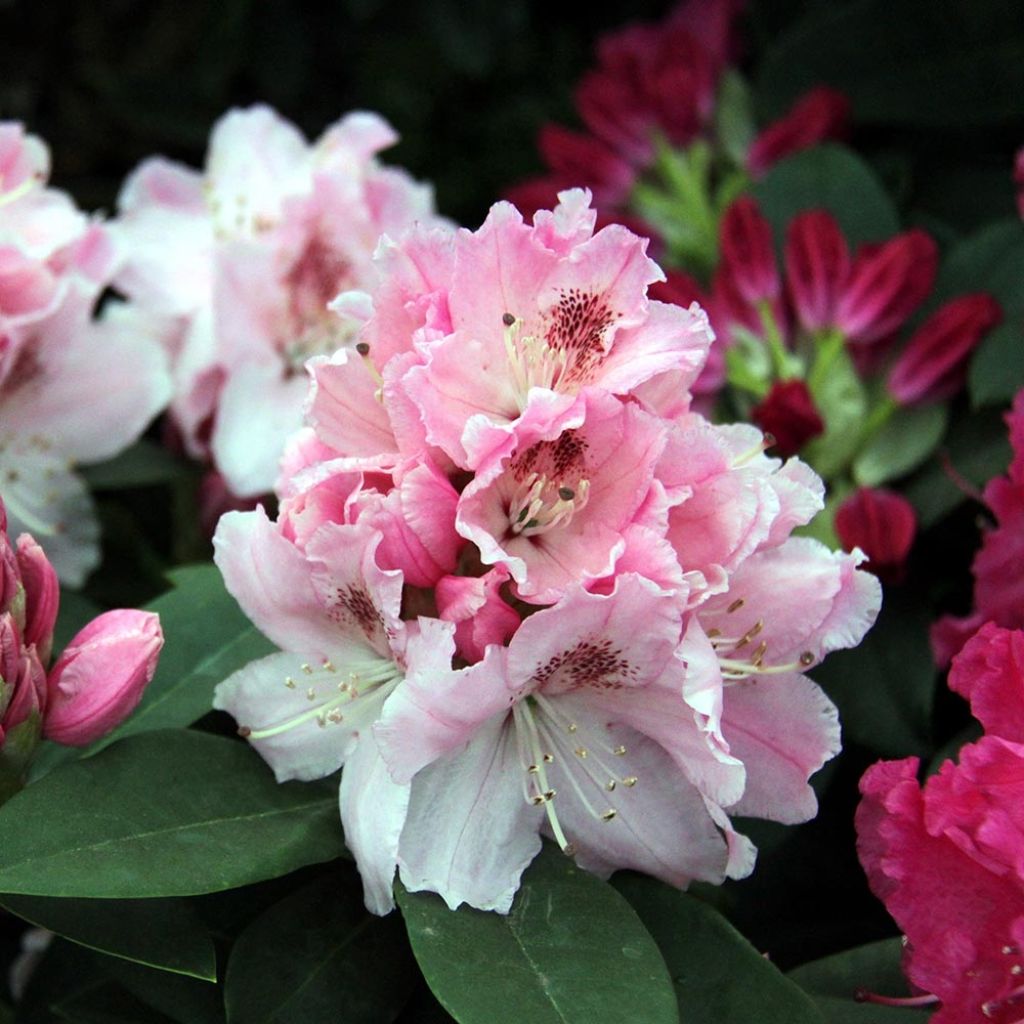

Rhododendron Albert Schweitzer
Rhododendron Albert Schweitzer
Rhododendron Albert Schweitzer
Rhododendron
This item cannot be shipped to the selected country
Delivery charge from €5.90
Delivery charge from €5.90
More information
Schedule delivery date,
and select date in basket
This plant carries a 24 months recovery warranty
More information
We guarantee the quality of our plants for a full growing cycle, and will replace at our expense any plant that fails to recover under normal climatic and planting conditions.
From €5.90 for pickup delivery and €6.90 for home delivery
Express home delivery from €8.90.
From €5.90 for pickup delivery and €6.90 for home delivery
Express home delivery from €8.90.


Does this plant fit my garden?
Set up your Plantfit profile →
Description
The 'Albert Schweitzer' hybrid Rhododendron, at first glance, is a beautiful, vigorous and very robust plant. This excellent variety, which won an RHS award in England in 2002 has dense foliage and an upright bushy habit. The shrub produces a mass of small pale pink flowers with purple pink spot in the throat, in April-May. Decorative throughout the year, this evergreen shrub should be grown in ericaceous soil, in partial shade or exposed to morning sun if the soil remains moist. A reliable choice!
Rhododendrons are plants of the Ericaceae family, just like heathers, the vast majority preferring a chalk-free, acid soil, and a damp climate. The result of a cross made by Adriaan van Nes in the Netherlands in 1960, Rhododendron 'Albert Schweitzer' forms a dense bush, initially upright, becoming more spreading over the years. At maturity, it will reach about 3m (10ft) in height and 2.50m (8 ft) in spread. It is fairly fast growing. Its evergreen, medium matte green leaves with a downy underside, are elliptical in shape, covering the plant well. In April-May, depending on the climate, an abundance of flowers overwhelms the shrub: grouped in voluminous corymbs, its beautiful pale pink flowers open to reveal dark pink heavily streaked throats. Nectar-rich, they are much frequented by pollinating insects.
The Rhododendron 'Albert Schweitzer' is a floriferous and quite hardy plant, down to -15°C (5°F) or even -20°C (-4°F). Even though they prefer partial shade, hybrid Rhododendrons can tolerate a moderate morning sun provided their base remains cool. 'Albert Schweitzer', with its abundance of bright flowers, will easily dress up a shady corner of the garden, alongside ferns, blue or variegated hostas, Pieris, heathers, Kalmias, Azaleas and Japanese Maples, or other rhododendrons from the same group, to create superb patchworks of textures and colours in spring. Rhododendrons can also be used to create beautiful hedges, on their own or possibly combined with camellias or mimosa (in mild climates). Growing in containers requires regular watering with alkaline-free water and specific fertilizer for ericaceous plants.
Report an error about the product description
Rhododendron Albert Schweitzer in pictures
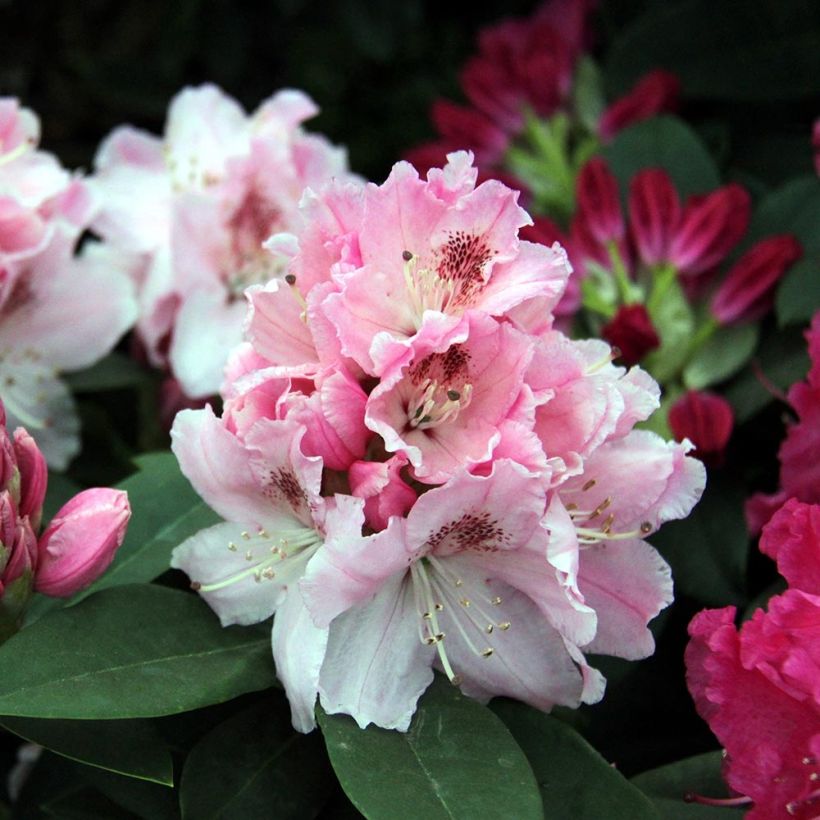

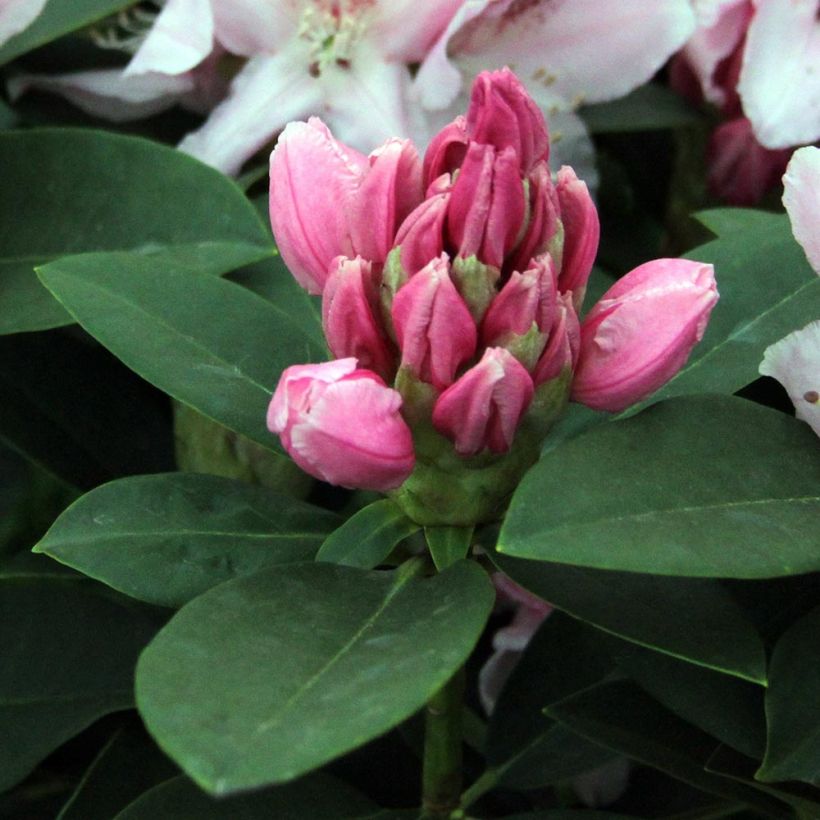

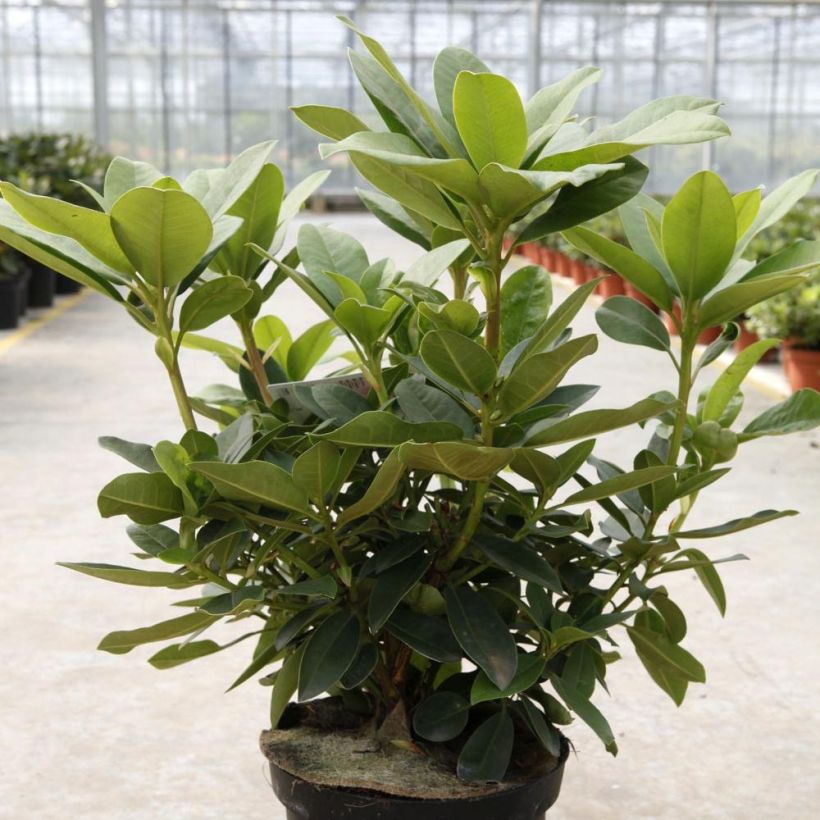

Plant habit
Flowering
Foliage
Botanical data
Rhododendron
Albert Schweitzer
Ericaceae
Rhododendron
Cultivar or hybrid
Other Large Rhododendrons
Planting and care
Plant the Rhododendron 'Albert Schweitzer' in a partially shaded position, protected from cold, drying winds, in a light, moist, humus-rich, either acid or neutral soil. Like all ericaceous plants, it does not tolerate chalky or heavy soils that become waterlogged in winter. If the soil remains moist in summer, this rhododendron will also tolerate exposure to the morning sun. Avoid planting at its base, as its shallow roots do not tolerate competition from other plants, especially for water.
Dig a hole three times larger than the pot. Soak the root ball in non-alkaline water and plant it level with the top of the soil, in a mixture composed of 1/4 peat, leaf mould, horticultural grit or perlite, and loam. Water thoroughly and keep the soil moist in summer. Azaleas and Rhododendrons have a shallow root system. As a result, they are sensitive to long periods of drought. That is why a soil enriched with humus and generous watering during dry periods is recommended. In addition, this root system is not very strong, which is why it is essential to lighten heavy soils with free-draining materials (horticultural grit, clay pellets) when planting. Apply a mulch of shredded pine bark around the base of the shrub every spring to keep the soil moist while maintaining an acidic pH.
Maintenance consists of removing faded flowers in summer and clearing out dead branches. Azaleas and rhododendrons can sometimes be attacked by weevils that eat the edges of leaves and rootlets, as well as the famous "rhododendron lacebug," which does not often cause significant damage. Yellowing of the leaves (chlorosis) in rhododendrons indicates poor uptake of iron from the soil and can lead to the premature death of the plant. While chalk is often the cause, poorly drained soil or deeply planted root balls can also explain the phenomenon.
Planting period
Intended location
Care
-
, onOrder confirmed
Reply from on Promesse de fleurs
Evergreen shrubs
Haven't found what you were looking for?
Hardiness is the lowest winter temperature a plant can endure without suffering serious damage or even dying. However, hardiness is affected by location (a sheltered area, such as a patio), protection (winter cover) and soil type (hardiness is improved by well-drained soil).

Photo Sharing Terms & Conditions
In order to encourage gardeners to interact and share their experiences, Promesse de fleurs offers various media enabling content to be uploaded onto its Site - in particular via the ‘Photo sharing’ module.
The User agrees to refrain from:
- Posting any content that is illegal, prejudicial, insulting, racist, inciteful to hatred, revisionist, contrary to public decency, that infringes on privacy or on the privacy rights of third parties, in particular the publicity rights of persons and goods, intellectual property rights, or the right to privacy.
- Submitting content on behalf of a third party;
- Impersonate the identity of a third party and/or publish any personal information about a third party;
In general, the User undertakes to refrain from any unethical behaviour.
All Content (in particular text, comments, files, images, photos, videos, creative works, etc.), which may be subject to property or intellectual property rights, image or other private rights, shall remain the property of the User, subject to the limited rights granted by the terms of the licence granted by Promesse de fleurs as stated below. Users are at liberty to publish or not to publish such Content on the Site, notably via the ‘Photo Sharing’ facility, and accept that this Content shall be made public and freely accessible, notably on the Internet.
Users further acknowledge, undertake to have ,and guarantee that they hold all necessary rights and permissions to publish such material on the Site, in particular with regard to the legislation in force pertaining to any privacy, property, intellectual property, image, or contractual rights, or rights of any other nature. By publishing such Content on the Site, Users acknowledge accepting full liability as publishers of the Content within the meaning of the law, and grant Promesse de fleurs, free of charge, an inclusive, worldwide licence for the said Content for the entire duration of its publication, including all reproduction, representation, up/downloading, displaying, performing, transmission, and storage rights.
Users also grant permission for their name to be linked to the Content and accept that this link may not always be made available.
By engaging in posting material, Users consent to their Content becoming automatically accessible on the Internet, in particular on other sites and/or blogs and/or web pages of the Promesse de fleurs site, including in particular social pages and the Promesse de fleurs catalogue.
Users may secure the removal of entrusted content free of charge by issuing a simple request via our contact form.
The flowering period indicated on our website applies to countries and regions located in USDA zone 8 (France, the United Kingdom, Ireland, the Netherlands, etc.)
It will vary according to where you live:
- In zones 9 to 10 (Italy, Spain, Greece, etc.), flowering will occur about 2 to 4 weeks earlier.
- In zones 6 to 7 (Germany, Poland, Slovenia, and lower mountainous regions), flowering will be delayed by 2 to 3 weeks.
- In zone 5 (Central Europe, Scandinavia), blooming will be delayed by 3 to 5 weeks.
In temperate climates, pruning of spring-flowering shrubs (forsythia, spireas, etc.) should be done just after flowering.
Pruning of summer-flowering shrubs (Indian Lilac, Perovskia, etc.) can be done in winter or spring.
In cold regions as well as with frost-sensitive plants, avoid pruning too early when severe frosts may still occur.
The planting period indicated on our website applies to countries and regions located in USDA zone 8 (France, United Kingdom, Ireland, Netherlands).
It will vary according to where you live:
- In Mediterranean zones (Marseille, Madrid, Milan, etc.), autumn and winter are the best planting periods.
- In continental zones (Strasbourg, Munich, Vienna, etc.), delay planting by 2 to 3 weeks in spring and bring it forward by 2 to 4 weeks in autumn.
- In mountainous regions (the Alps, Pyrenees, Carpathians, etc.), it is best to plant in late spring (May-June) or late summer (August-September).
The harvesting period indicated on our website applies to countries and regions in USDA zone 8 (France, England, Ireland, the Netherlands).
In colder areas (Scandinavia, Poland, Austria...) fruit and vegetable harvests are likely to be delayed by 3-4 weeks.
In warmer areas (Italy, Spain, Greece, etc.), harvesting will probably take place earlier, depending on weather conditions.
The sowing periods indicated on our website apply to countries and regions within USDA Zone 8 (France, UK, Ireland, Netherlands).
In colder areas (Scandinavia, Poland, Austria...), delay any outdoor sowing by 3-4 weeks, or sow under glass.
In warmer climes (Italy, Spain, Greece, etc.), bring outdoor sowing forward by a few weeks.

































